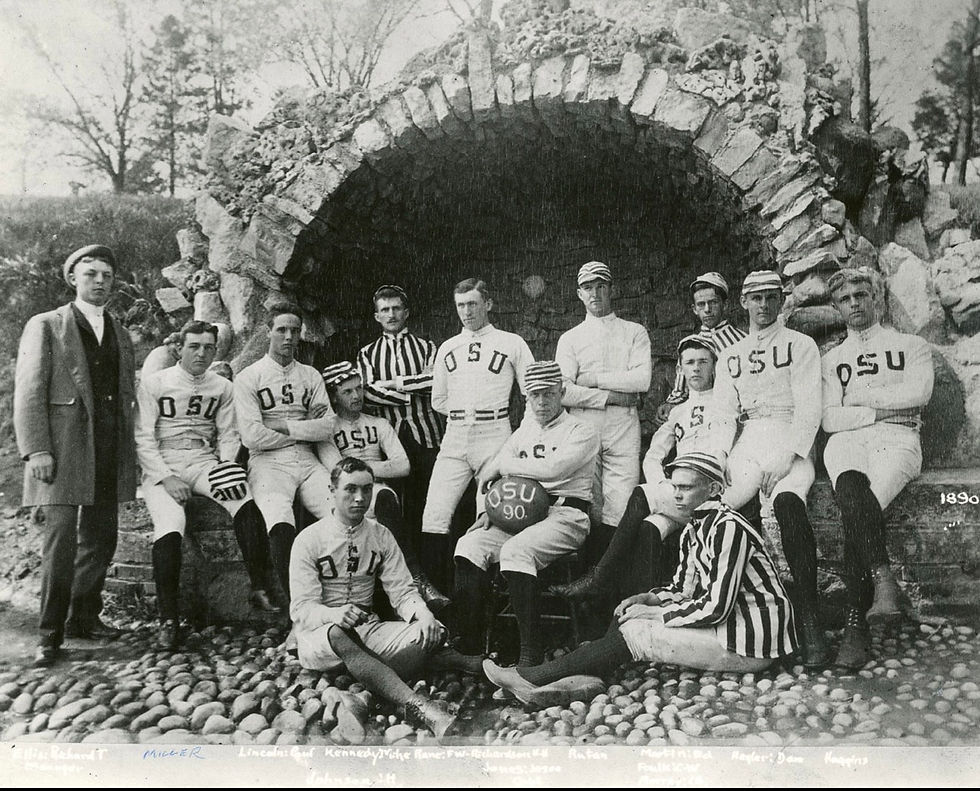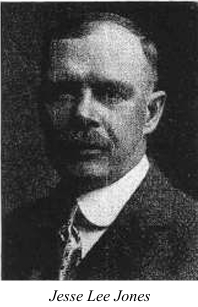First Ohio State Football Captain and Unofficial ‘Coach’ in 1890 Was Martins Ferry Native Jesse Lee Jones, Who Was the Grandson of Revolutionary War Heroine Bety Zane
- vikingrider2
- Aug 13, 2024
- 3 min read

The Ohio State University football team in 1890. Martins Ferry native Jesse Lee Jones (holding the ball in the center) served as captain and unofficial 'coach' in the spring.
By Jeff Harrison
There are many Martins Ferry connections to the football history at The Ohio State University including Lou ‘The Toe’ Groza’. Fred and Bob Bruney, Karl Sommer II and Mike Kuri, but the very first Purple Rider turned Buckeye has gone under the radar – Jesse Lee Jones, who was the grandson of legendary Revolutionary War heroine Betty Zane!
Jones’ connection to the goes back to the beginning of the OSU football program in 1890 where he was not only a team captain but served as the unofficial “coach” since one had not yet been named.
The first documented game came in the spring of 1890 - Saturday, May 3 to be precise – a 20-14 victory at Ohio Wesleyan University, and that game that was later counted toward the season record.
That fall, Columbus native Alexander Lilley assumed the reins as the first “official” head coach. OSU lost all three games in the fall for a 1-3 season mark, with the official records crediting Lilley with the spring win although he reportedly was 500 miles away in Princeton, New Jersey at the time of the game and had not yet become the coach.
Lilley, an unpaid volunteer who often rode his pony to and during practices, coached during the 1890 (1-4) and 1891 (2-2) seasons with a two-year record of 3-5 and then coached one year at Ohio Wesleyan in 1892 (1-3) before stepping away.
An interesting side note regarding OSU in 1890, the students originally selected Orange & Black as the school colors, but thankfully a switch was made to Scarlet & Gray.
---
The following information is from the book Ohio State Football: The Forgotten Dawn, written by Rober J. Roman:
If anyone deserves the title “The Father of Ohio State Football,”, that person is Jesse Lee Jones. When people look through the program’s historical record, they will see that Jones was the captain of the first Ohio State team. But that fact alone does not begin to tell his true significance. His connections to the program go back before the very beginning.
Jones was part of two earlier campus attempts at forming a varsity football team. The first attempt was in the spring of 1886, when Jones was a freshman. He played halfback. We cannot know exactly what football rules this team was playing under, but we do know the roster included a three-quarter back (a rugby position) and a goalie. The second attempt at forming a team was in the fall of 1997 when Jones was a junior. This team made a more concerted effort to learn the proper “gridiron” rules, as football was played at Yale, Princeton, and other eastern schools. Jones lined up at guard. Neither of these early teams found an opponent to play, and both attempts fell apart.
Jones took the following year off, but when he returned to school in the fall of 1889, he found that no progress had been made in building a football team. That’s when he took matters into his own hands. He took up a collection on campus to buy a rulebook and a new ball, and then formed a “rules committee” to explore the regulations and strategies of the game. History notes that the first Ohio State football coach was a man named Alexander Lilly, but a closer look at history reveals that Lilley did not arrive until the fall of 1890. During the 1889-90 school year, it was Jesse Lee Jones who filled the roles usually offered by a coach.
On May 3, 1890, Ohio State played its first football game. The opponent was Ohio Wesleyan University, whose team outweighed Ohio State and nearly every position. Ohio State’s advantage in the game was Jones, who knew the rulebook front-to-back. He advocated for his players throughout the contest, dragging his rulebook over to the officials to argue why a disputed touchdown should count, or why a rough tackle did not deserve a penalty. The Ohio State Lantern, the Ohio Wesleyan Transcript, and the Delaware Gazette all agreed that Ohio State won the game largely due to a superior knowledge of the rules.
Ohio State, with Alexander Lilley coaching, began its first full season of football the following fall. The team immediately entered into a demoralizing seven-game losing streak. That streak, in fact, might have killed the football program in the bud if not for the shining memory of that first victory in May under Jesse Lee Jones.



Comments